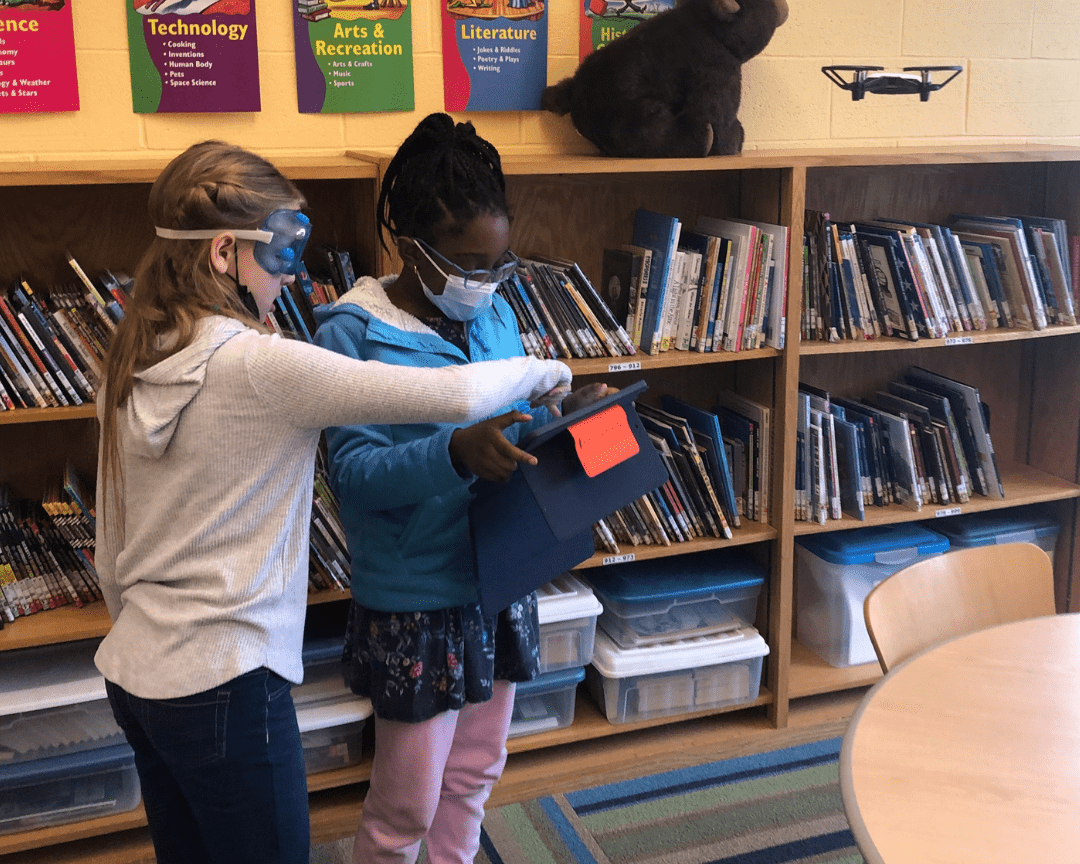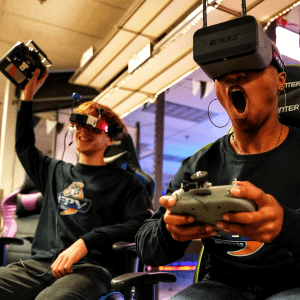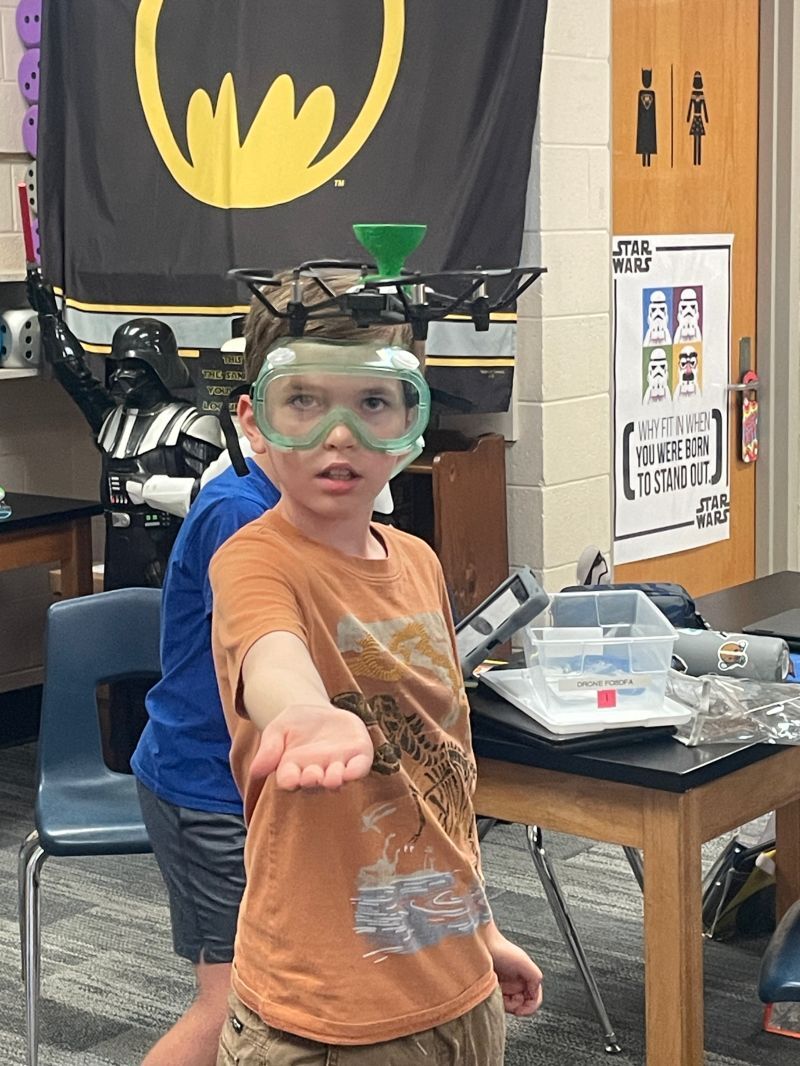“When am I going to use this in real life?”
The fifth time that question was asked that year. It was my third week of teaching in my own classroom and it felt like that phrase was quickly becoming the chorus line of my (already overwhelming) job. By the end of that first year I had a laundry list of responses to that question almost as long as my roster.
But years later that question still burns in my head. It’s that question that launched me on the quest that drives my career, fills my Kindle library picks, and tethers me to the messy profession of educating young people.
There is something foundationally wrong if students feel like their math class is so disconnected from their everyday lives that they need to ask how it relates (repeatedly). In a world packed with technology, information, and data, science and math courses have never been more relevant.
As someone who writes curriculum for kids drone classes, I force myself to ask:
So why does it feel so abstract? And how can we, as educators, make the bridge between students’ reality and their coursework easier to cross?
What Do Drones Teach Kids About?
The first step we can take is to teach STEM as a set of tools that the students can use to solve real-world problems, rather than a set of terms to memorize or algorithms to follow. Real people use science and math and technology and engineering to solve real problems in their real jobs. Let’s expose students to some of that, starting at a young age.
People with real jobs don’t use a single subject in isolation, but rather they use the combination of skills from a variety of subject matters to perform a complex task.
Think about someone working in the drone industry. They need to understand the physics of flight and aerodynamics, the mathematics behind coordinate systems and geometric flight patterns, the mechanical puzzle of how the propellers fit onto the motors and interact with the processor, and the engineering process of programming a flight path that accounts for weather and other variables. And then there is all the industry-specific knowledge they use and apply depending on what their drone is doing.
Using drones in the classroom is an opportunity to make STEM feel more relevant to what’s happening in the real world. And what do drones teach kids about? The possibilities are limitless.
The kids could learn about the physics of gravity and air resistance as they design and drop a load off the drone. They could learn about the art of film editing as they create and edit a movie to share with their friends. They could learn about business as they develop a way to use their drone to make money. They could learn about medicinal shelf lives and cryogenic solutions as they find a way to use drones to deliver medicine to remote villages.
Pick an industry and there is probably a drone being used or developed to make operations more efficient. Teachers can use drones in the classroom to simulate and study these innovative drone applications with their students.
Wouldn’t it be cool if the English teacher could use a drone project after reading a book about the Wright Brothers? Or a physics teacher could use drones to teach their students about Newton’s Laws of Motion. And then the computer technology teacher could use a drone to teach their students how to code sequences? And the students could see that each subject is vital to surviving the adult world as it is to maintaining their GPA.
Drone Programming
Along with all the scenario-based applications, drones and robotics provide a unique space to learn to code. Much of the coding curriculum on the market feels abstract and intangible.
As a person who likes to use their hands, learning to code was hard for me. It felt like I was constantly trying to grasp air and then opening my hand to find nothing there. Some people are really good at thinking abstractly, but young kids are usually developmentally not ready for that kind of learning. Kids generally need to construct their early knowledge with concrete, tangible objects.
Programming drone flight gives a beautiful opportunity to do just that. The child is only using their device to input their code, but the results are all real and physical. They can see with their eyes that the code they placed in a loop is repeating over and over. They can feel with their hands as their command to take off makes the propellers push air downward. The tangible result of their code helps them understand the basic coding principles they are learning.
And the barrier entry to coding a drone is remarkably low. Because drones can be coded using functional, object-based languages, the kids don’t need to worry about learning syntax or forgetting a semicolon. It doesn’t take years, or even months, of experience to code a sequence or write a function for the drone to perform.
Kids Drone Classes & Drone Flying
Students can learn to operate and fly their drone manually as a beautiful parallel to the coding skills they are learning about. Flight gives students the opportunity to practice and build intuition about how drones move. This intuition allows them to build a set of code that makes sense to them, rather than following an algorithm provided by the teacher.
It’s no secret that our society undervalues right brain “soft” skills like motor development, human connection, and creativity. The big problem is that children live most of their lives in their right brain. When we deprive them of opportunities to develop their right brain, we shortcut their potential and stunt their growth. At young ages, kids should spend more time playing, interacting, and creating.
Ultimately, making time for the right-brain activities upfront gives space for students to make neural connections between their right and left brain later on. These connections are what will allow them to apply their logical skills flexibly and creatively to all sorts of difficult problems.
Flying drones gives space for that growth. Flying develops hand-eye coordination, spatial awareness, and fine motor skills as they maneuver through obstacles. They work with other kids to solve problems and build relationships. They get to play and use their bodies, and then turn around and apply that experience to the logical and sequential task of coding.
Flying a drone is not easy – it requires practice and finesse. Students become more resilient as they fly through the same course over and over, probably crashing a few times but ultimately getting better in small increments each time. As they work with their classmates to engineer flight paths and solve problems, they learn the value of teamwork and perseverance.
Drone Lessons
An effective format for drone lessons starts with a quick flight lesson or engineering flight challenge that allows the students to think creatively and use their bodies. Not only is this part of the lesson fun, but it is a great time to build social and emotional skills like disagreeing appropriately and thinking flexibly.
After the flight portion, students move on to code a similar, parallel mission with their drone. Here, students follow a similar process to an engineer who builds a scale model before moving on to the actual build. They have already solved the problem using flight, so their brain is primed to build a solution using code. This makes the abstract job of coding more tangible, and the student is not stuck grasping air.
Students finish with a class discussion that gives them an opportunity to synthesize and connect the two activities with what is happening in the real world of drones.
Drone Curriculum for Kids Drone Classes
Most teachers are capable of developing learning activities that integrate cross-curricular skills. But it takes time, a luxury most teachers don’t have. A solid, flexible drone curriculum can provide teachers with a launch pad to engage students in the world of STEAM. At Drone Legends, we developed a curriculum that is easy for teachers to use and adapt to their students’ specific needs. Our hope is that if enough students buy it they will have a magical experience with STEAM and maybe, just maybe, stop asking “When am I going to use this in real life?”Interested in bringing the magic of drones to a school, after school, enrichment program, or even homeschool coop near you? Contact us today!




